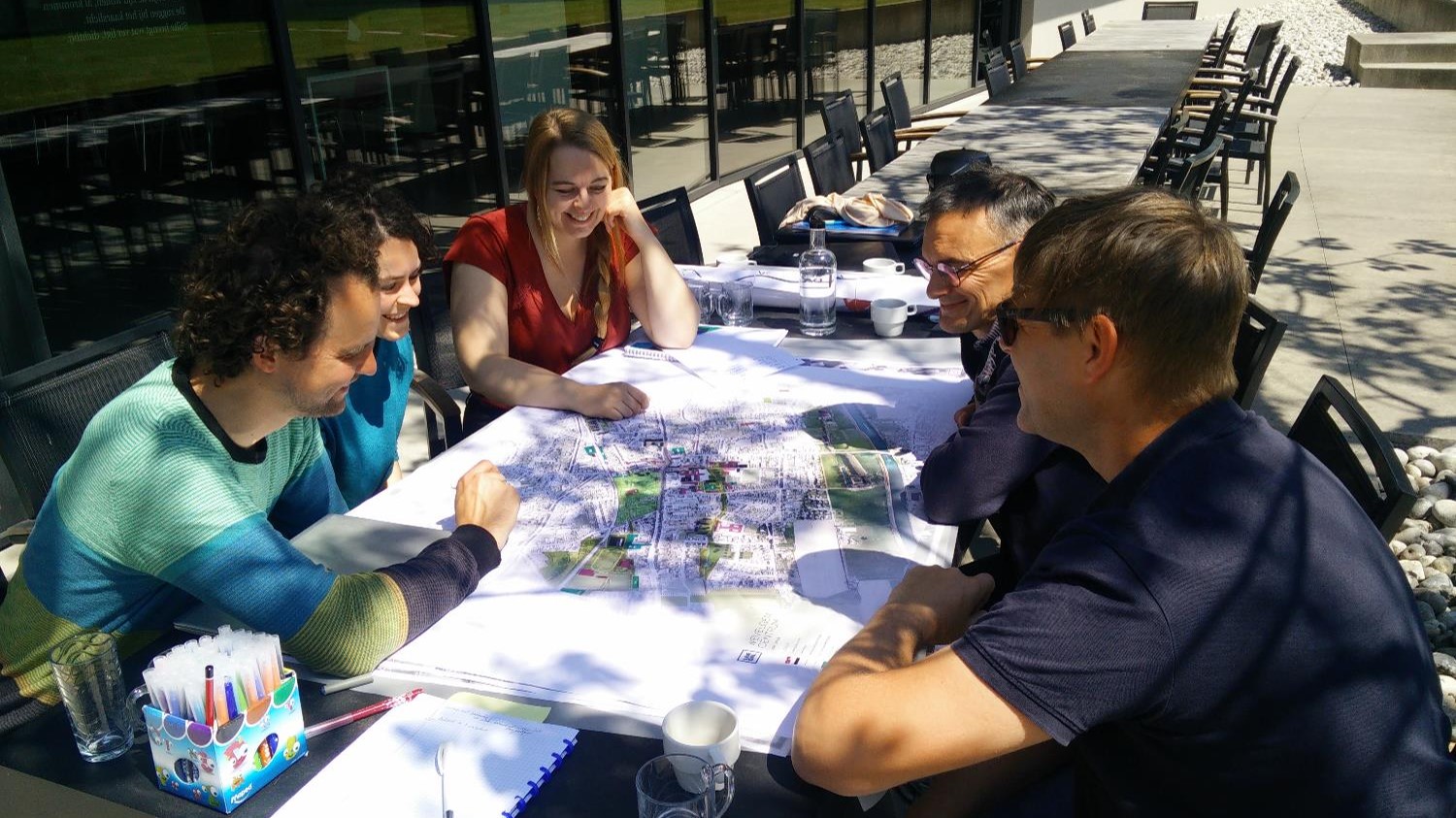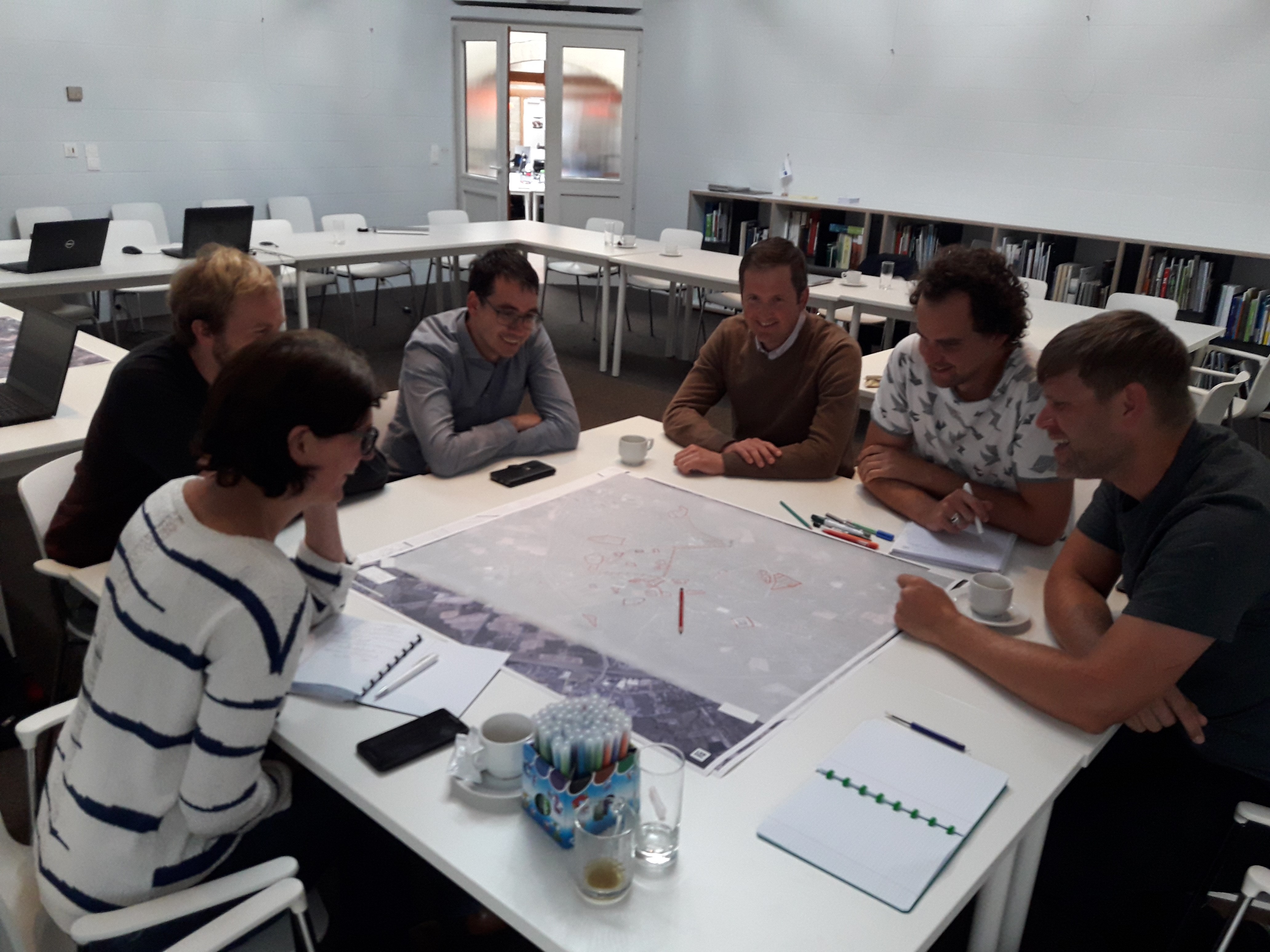by Veerle Cox
By signing the Covenant of Mayors, the 13 mayors of South West Flanders already signed for 40% less CO2 by 2030, and on behalf of the same 13 municipalities, regional developer Leiedal organised seven capacity-building workshops on renewable energy and durable heat earlier this year. In these workshops, within the European HeatNet NWE project framework, concrete actions were formulated to meet the climate goals set for South West Flanders.
For each Leiedal municipality, we probed for the quick wins and long-term measures, more specifically for opportunities for heat networks, wind and solar energy and climate-neutral neighbourhoods. Interested officials and city council members of the 13 municipalities attended the workshops, along with experts from consultancies (e.g. Antea, Kelvin Solutions, BUUR, BeauVent) and educational institutes such as the universities of Ghent and Brussels.
Action times a hundred
The workshops generated plenty of warm ideas and cooked up no less than 100 climate actions. A water treatment plant on the outskirts of Waregem, for example, could very well be a source for a low-temperature heat network, providing durable heat for the entire city centre. Lendelede plans to extend a transformer station, making residual heat available in the future. Again, this would be a golden opportunity to install a heat grid. In Kortrijk, we saw a real possibility to match the reconstruction of the cycle network to the roll-out of a heat network for the inner city. In Wevelgem - boasting an number of important local biomass actors – the new master plan and planned depaving (removal of redundant asphalt and concrete) of the city centre could also be the perfect start for the implementation of a heat net. By doing so, heat networks are linked to other measures towards climate adaptation, such as creating bicycle connections and depaving streets.
Apart from heat networks, we also saw chances for wind and solar energy. Regional industrial estates are preeminently suited for generating solar energy on large rooftops, and why not build more wind turbines along major roads and railroads, such as the A19 motorway? Admittedly, South West Flanders does not hold many assets in the way of renewable energy. Deep geothermal or hydraulic power, for example, are quite literally out of our depth. Still we are presented with a large number of opportunities, and it now became clear that the future energy landscape of South West Flanders will consist primarily of rooftop solar panels, wind turbines along line infrastructure and durable (residual) heat distributed via heat networks.
The heat is on
One clear conclusion to be drawn from the capacity-building workshops is: this really is the time for action if we are going to meet the climate goals for our region. The results of the workshops constitute an important part of the ‘transition roadmap’ of South West Flanders, our guide to becoming climate proof in the future. Many policy makers, civil servants, experts and elected officials engaged in dialogue on the climate challenges we are facing. Together we looked for solutions that are currently being compiled in our ‘regional spatial energy strategy’. As such we aim to turn these actions into real deeds in the years to come.


